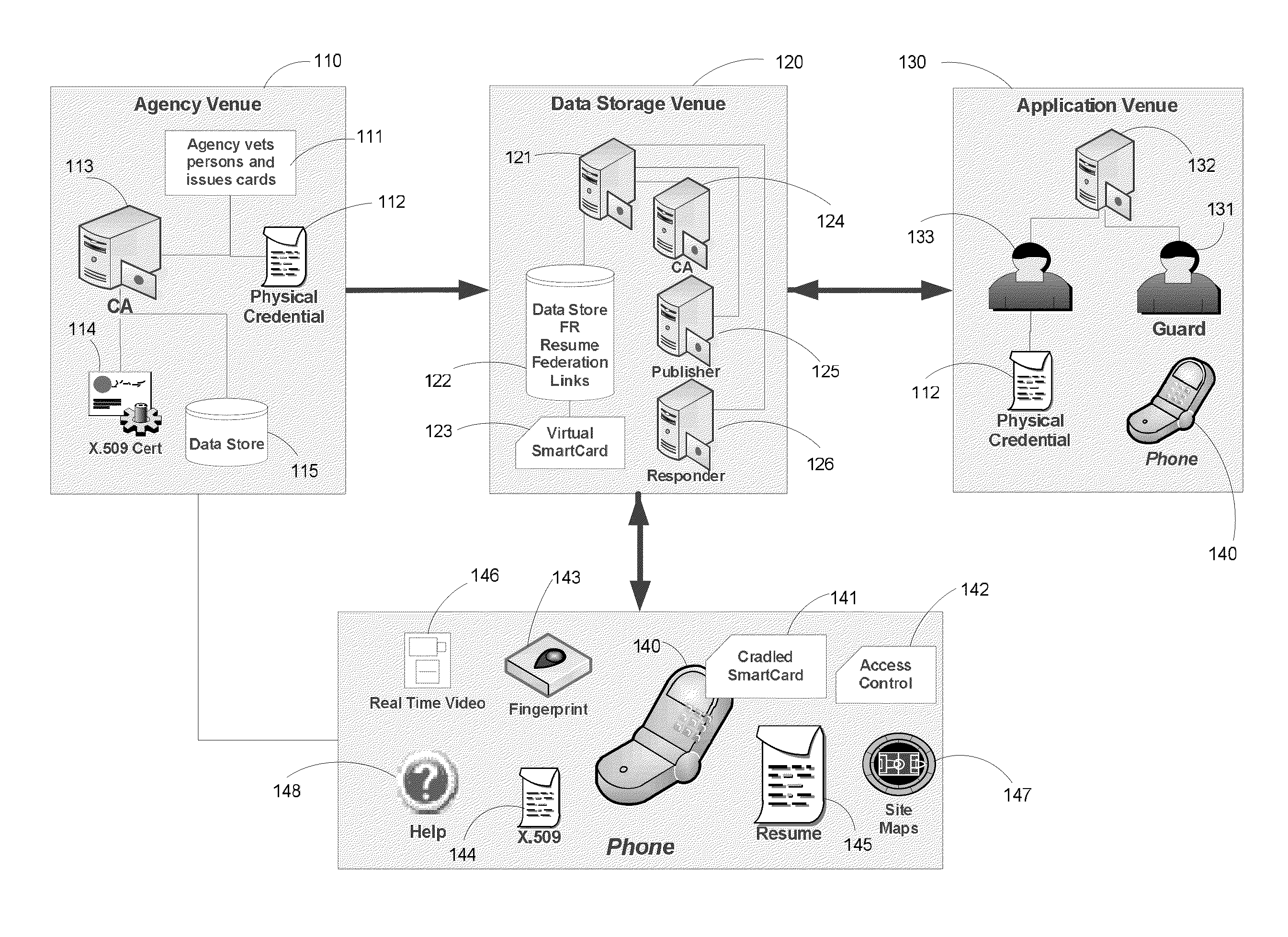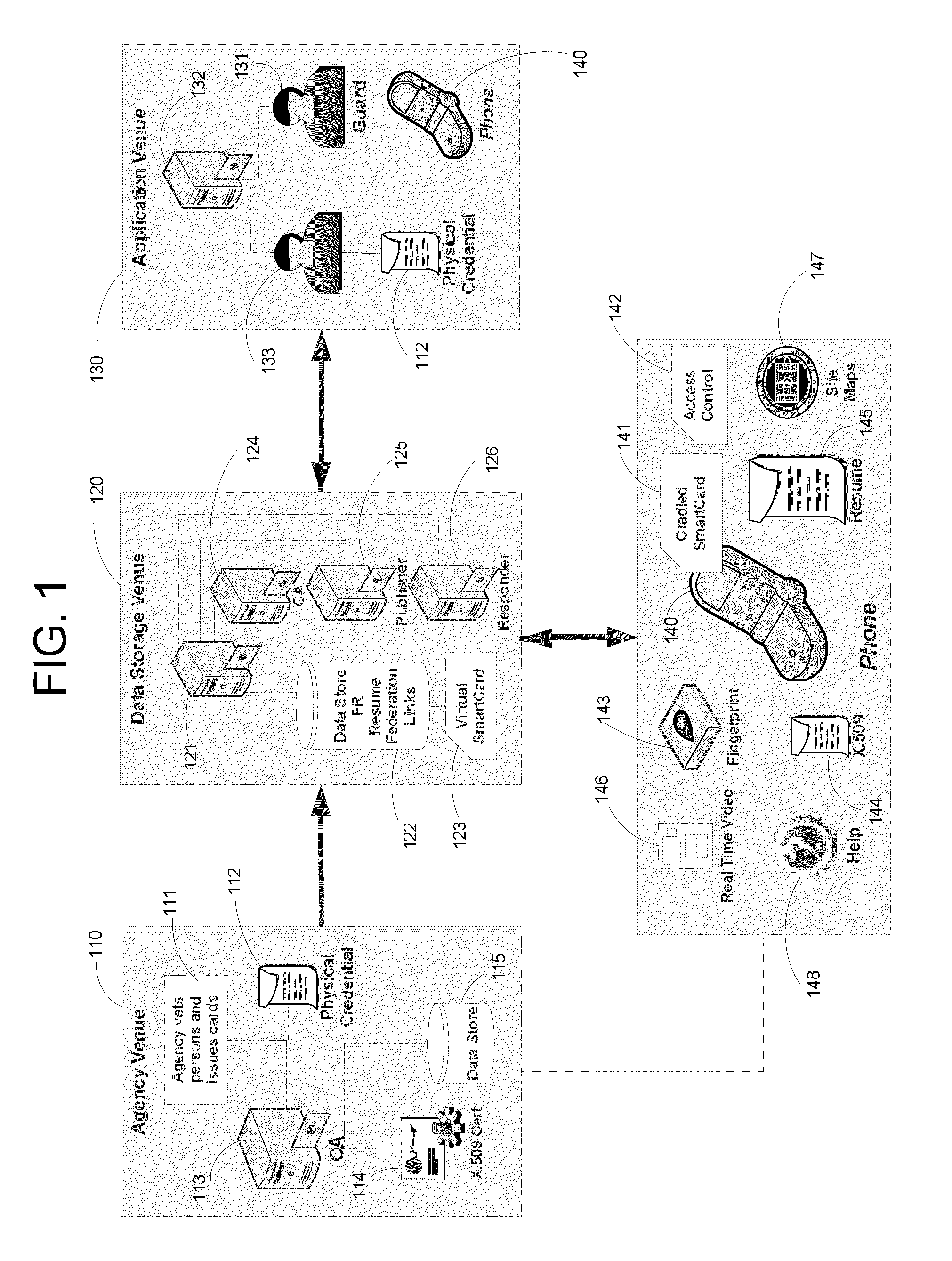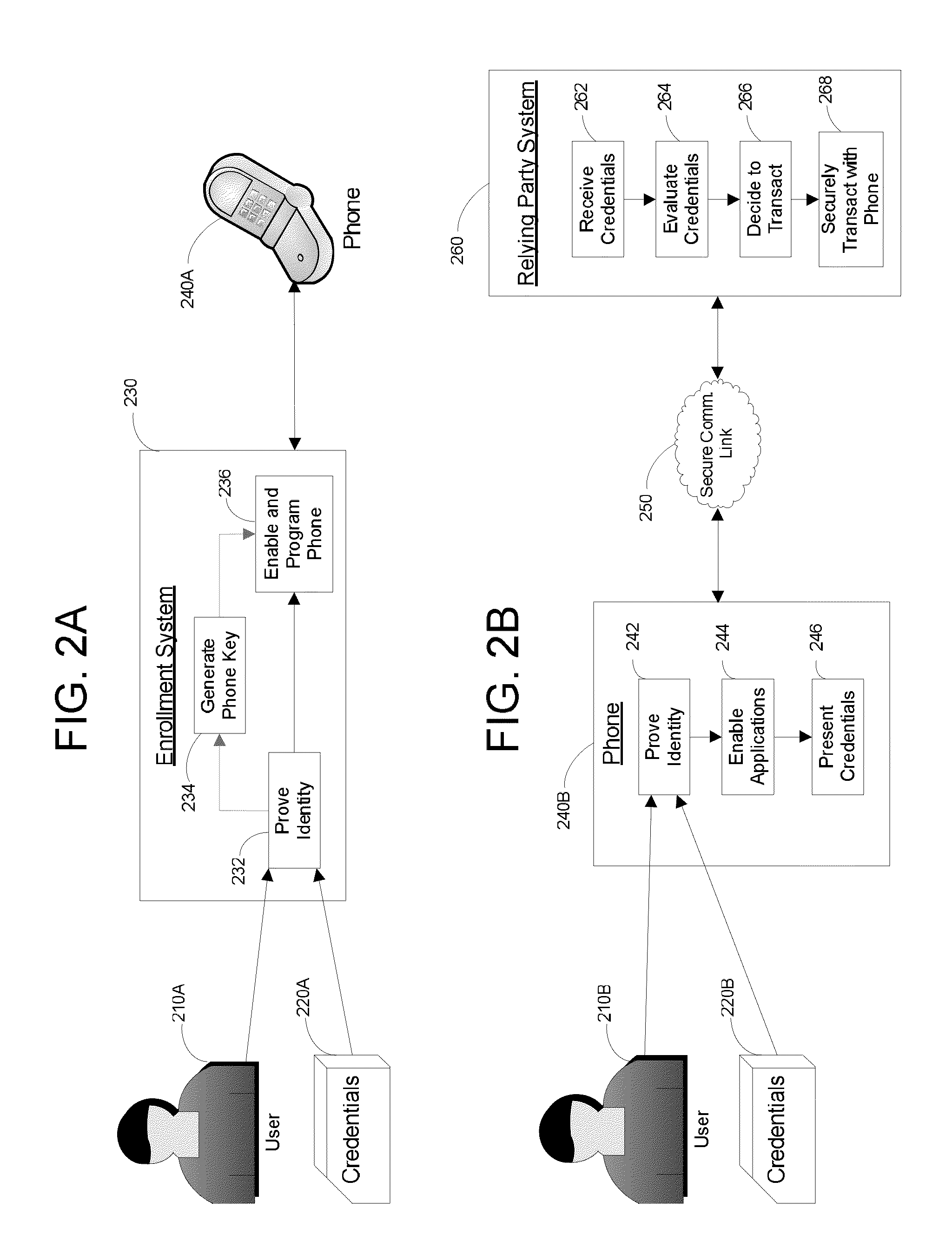Apparatus and Methods for Providing Scalable, Dynamic, Individualized Credential Services Using Mobile Telephones
a mobile telephone and credential technology, applied in the field of credential services, can solve the problems of reducing the computational power required by each device, reducing the number of computations, and saving so as to reduce the computational power required, increase the number of devices, and save bandwidth usage and response time
- Summary
- Abstract
- Description
- Claims
- Application Information
AI Technical Summary
Benefits of technology
Problems solved by technology
Method used
Image
Examples
Embodiment Construction
Definitions
[0090]As used in this description and the accompanying claims, the following terms shall have the meanings indicated, unless the context otherwise requires:
[0091]A digital signature is an output of a public key (asymmetric cryptographic) algorithm used to simulate, in digital form, the endorsing properties of a physical signature. Algorithms for working with digital signature algorithms appear in pairs: one algorithm exists to create the signature, and one algorithm exists to validate the signature. Digital signature algorithms are well known in the art, an illustrative example being NIST, FIPS 186: Digital Signature Standard (DSS), hereby incorporated by reference. (FIPS-186, like other FIPS standards, is an evolving standard. A version current as of the date of filing may be found at http: / / csrc.nist.gov / publications / fips / fips186-2 / fips186-2-change1.pdf.) The DSS specifies a Digital Signature Algorithm (DSA) which is partially described in U.S. Pat. No. 4,995,082 (Schno...
PUM
 Login to View More
Login to View More Abstract
Description
Claims
Application Information
 Login to View More
Login to View More - R&D
- Intellectual Property
- Life Sciences
- Materials
- Tech Scout
- Unparalleled Data Quality
- Higher Quality Content
- 60% Fewer Hallucinations
Browse by: Latest US Patents, China's latest patents, Technical Efficacy Thesaurus, Application Domain, Technology Topic, Popular Technical Reports.
© 2025 PatSnap. All rights reserved.Legal|Privacy policy|Modern Slavery Act Transparency Statement|Sitemap|About US| Contact US: help@patsnap.com



